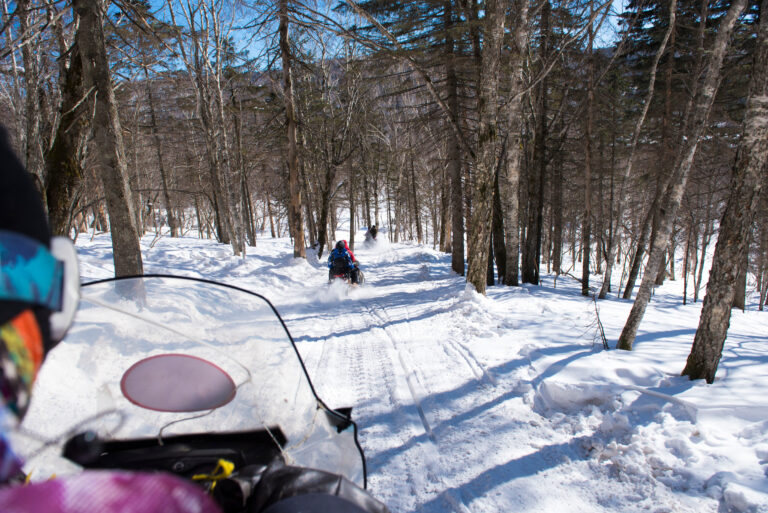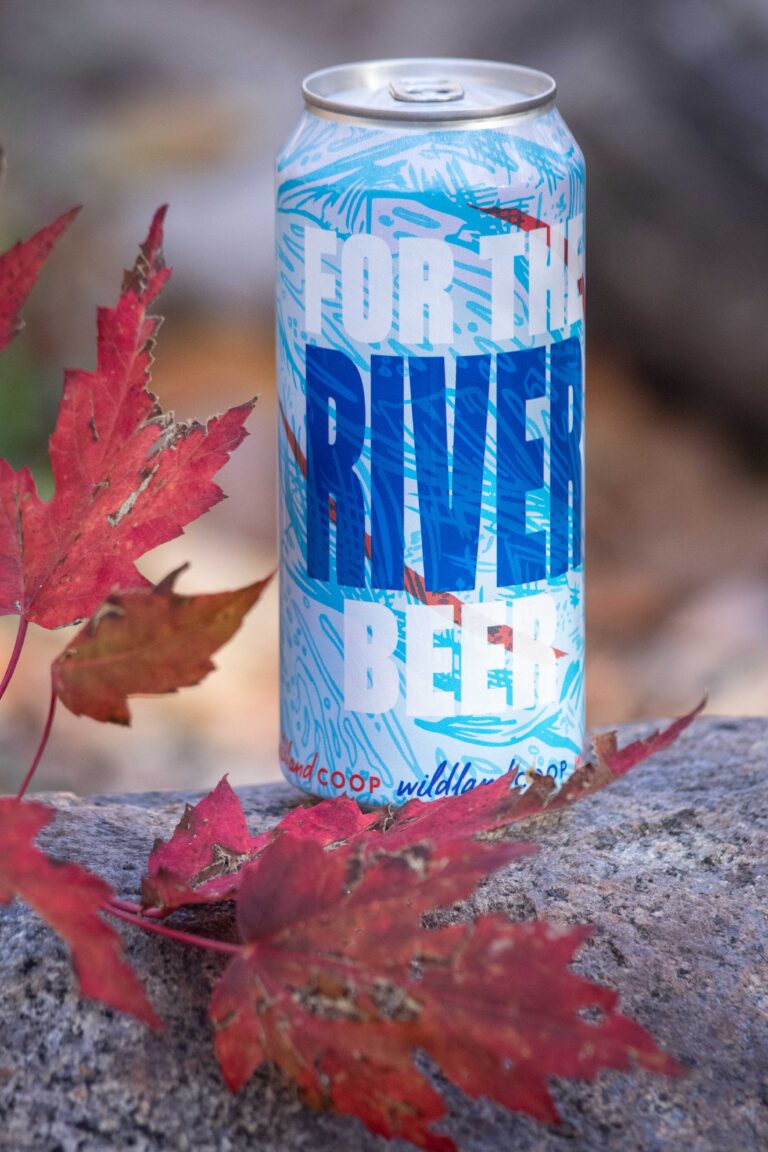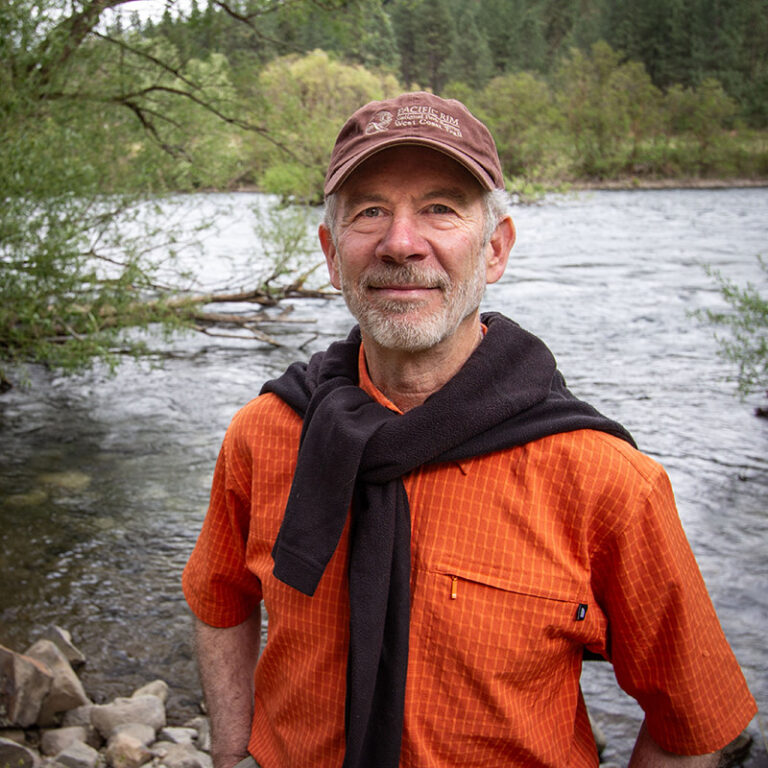In the mountains, every time someone blazes a memorable new trail or creates a distinguished new path, he or she names either the endeavor or the route. Beyond arriving at the summit by the easiest means, climbers prefer the challenge of a route, and many prefer being the very first on a certain course. Sometimes the route name sticks; sometimes it doesn’t. Into the 1960s, the vast majority of names reflected the primary feature of the route, or simply echoed the names of those that forged the path. However, in the past 40-plus years, rock climbing routes have taken a creative turn, and the name of a rock climb is no longer just The West Face, The North Ridge or The Beckey Route.
Back in 1961, after Ed Cooper and Dave Hiser successfully completed the first ascent of the 450-foot east face of Chimney Rock, the route was simply called Cooper-Hiser. Still, Cooper and Hiser didn’t climb the route without resting on their ropes or hanging from their equipment, also known as aid climbing.
So in 1972, John Roskelley and Chris Kopcynski ascended the wall via better technique, and free climbed the route without any upward assistance or rest from their climbing gear. However, the route name respectfully remained Cooper-Hiser because Ed and Dave were undeniably the first to claim that path—and thus name the prize.
A perfect storm of climbing advancements in the mid-1970s contributed to a boom in rock climbing and climbing development, especially in Yosemite Valley. Once the primary and obvious rock features had been climbed, such as Dihedral at Minnehaha, climbers continued to climb available rock and simply made up names for their routes as they went along. Local climbers found inspiration from other climbers around the country, who were likewise inspired by climbers from other climbing regions. In comparison, this mishmash of influence mirrors how certain genres of music were influenced, fostered and bred in order to become something greater.
Creativity and adventure fanned the early flames of rock climbing. The Spokane Mountaineers grew, Mountain Gear opened up a little climbing store in downtown Spokane, and the boldest Spokane climbers started to carve a name for themselves—not just locally, but deep into the wildest reaches of climbing and mountaineering.
Bold climbers such as Roskelley, Jim Wickwire and Kopcynski, as well as Dane Burns and Randall Green, climbed and named some of the greatest climbs in the area. They, along with hundreds of other mountaineers, hikers and scramblers in the Inland Northwest, pioneered the local crags and kick-started the majority of routes with creative names.
GEORGE HUGHBANKS makes friends quickly and easily. He also loves climbing, and has a fever for rock climbing development in the Spokane area. When asked about naming routes, he looked like a young child begging to tell his sister what she is getting for Christmas.
“When I first started climbing in 1992, I went to Joshua Tree. I climbed routes that were established 20 years before I learned how to tie-in to a rope. You can still go to Joshua Tree and climb those same routes almost 20 years later,” he says.
“Then, I started setting routes at Wild Walls in 1995. Hundreds and hundreds of names. I always did my best to be creative, [to] always try and conjure new short literary visions. But the routes indoors would disappear and fade away from memories over time, so it seemed their brevity led to less serious contemplation.
“Routes outside, on the other hand, just age and become hopefully more classic with time. They seem to deserve a little more seriousness. The best names seem to come about organically, at least for me—some kind of reference to the day. Sometimes they have a direct correlation to the specific day—like in the case of 60% Heroes at McLellan. My good friend Greg Welton and I established this route in January of last year. The day was a balmy 20 degrees with a 60 percent chance of more snow. Perfect day to put up a route, right? Greg and I joked that only mountaineers would be out climbing in weather like that.
“Other [names] come about because of the people we share our lives with. The Crumb Brothers Wall is one such place. The wall itself is named after my little boys, the original cookie crumb brothers. Drunken Master and LoLoGoGo are aptly named after my son, Logan, in reference to his appearance while taking his first steps.”
RICK LA BELLE has a humble demeanor but a winning smile. He has pioneered more than 75 alpine routes in the Cascade and Olympic mountains alone. In 1989, he started sport climbing, and in 1996 he helped create a rock climbing club at Gonzaga Prep where he teaches classes in classical languages and the history of religion. He also wrote the climbing guide Rock Climbs of Central Washington, which showcases seven superior alternatives to Frenchman’s Coulee.
“I developed dozens of climbs in the Washington desert with Steve Reames. Since I’m a Latin teacher and he is an English professor, and we were both tired of seeing route-names made from sexual double entendres, we launched into sociology (Guys with Girlfriends, Girls Who Say ‘Dude’), then obscure Latin puns (Supprehension, Aqualine,), and references to obscure art flicks (Secrets and Lie-backs, Priscilla Queen of the Desert, and five climbs named after Akiri Kurosawa films), and eventually obscure French philosophy (Derrida’s Deli, Foucault’s Critique, Seamiotics),” says La Belle.
“On the western face of Banks Lake’s Highway Rock, our first climb overlooking the lake was Calanques, named in honor of a limestone crag in France that overlooks the Mediterranean. Our second route in the area was 300 feet of ‘dancing’ on smooth slabs, so we called the route Pas de Deux, after a French ballet. For the next three years we spun out French names for about a dozen routes.”
Rick is not afraid to laugh at his own jokes, and he smiles when he reports, “Yes, Croissant follows a curving line, and Fin de Siecle was finished in 1999.”
Among hard-core and elite rock climbers, climbing routes in the Inland Northwest receive considerable honor and recognition. The breadth and legacy of climbers in the Spokane area equals many of the greatest climbing collections, and the results are easily found in our climbing community. Less than 30 minutes from downtown Spokane, you can find multiple granite or basalt cliffs to climb. Within a couple hours of travel time, you can scale impressive limestone caves or travel up massive multi-pitch cliffs that require multiple rope lengths to reach the summit. A library of eight or nine climbing guidebooks overlaps the Inland Northwest, and the rate of new sport climbs each year suggests local climbers deserve another climbing guide within the next two years.
No matter which crag you pick, the names of neighboring climbing routes show a positive amount of creativity. Some of the most imaginative route names include To Have and Two Holds, Screaming Fingers, Not To My Lichen, Russian Arête, Chronic Rookie, The Hedonist, Flogging a Dead Horse (more on that later), Motley Crux, Natural Born Puller, Overly Optimistic Local, Dr. Ceuse, Klingon, Camisa Negra, Battle of the Bulge, Girls Just Wanna Have Guns, Pearls V4 Swine and Grin And Barrett (again, more on that later).
BOB ORDNER will hug you the first time you meet—consider yourself warned. He is a genuine gentleman with a Southern twang that reveals his generous hospitality and never-ending ability to laugh at just about any comedic occasion. Likewise, his quick wit and rich outdoor experiences shine in his clever climbing route names, and most climbers consider it an honor to share a rope with him.
“Route naming is a thoughtful process,” he says. “Some of the route names from other areas that have stuck with me over the years were A Steep Climb Named Desire from, of course, A Street Car Named Desire [the Tennessee Williams play]. This route is at Donner Summit, California. Another was a Colorado route named Conan The Librarian.”
Bob regularly climbs all across the country. Outside of the impossible Midwestern states, such as Kansas and Nebraska, he has rock climbed nearly everywhere at least once. Lately, his hunger has pointed towards Canada, and his climbing appetite quickly devoured several unique climbs around Nelson, British Columbia, with climbing partner Eric Barrett.
“In our own backyard, I think The Perfect Storm deserves mention. Perhaps the best route at the Big Rock was named for the use of a gas-powered blower that blew the eight inches of rock lichen and debris off of the ledges while cleaning the route, creating a dust storm that stuck to all exposed sweaty skin. That blower was quite amazing indeed, blowing rocks and debris out of cracks and creating a Perfect Storm,” explains Bob. “I also appreciate Council of Elders, named after the senior crew of first ascent climbers Bob Loomis, Rusty Baillie and myself.”
As if revealing the last of four Aces in his hand, Ordner shares a big smile and says, “Grin And Barrett was named in honor of first ascent member Eric Barrett and incorporates the toothy grin and band of quartz that graces the bottom of the route.”
Few people would pick SERRA BARRON as one of the best female rock climbers in our area due to her petite size. Then again, she is often one of the most graceful and fluid climbers anywhere—not unlike a powerful gymnast. She loves climbing projects and overcoming obstacles, but she is never too serious. She loves laughing about herself as much as she loves laughing at anything else. She frequently sets indoor routes at Wild Walls, and few doubt any other local female climber has accomplished as many first ascents as Serra Barron (often incorrectly spelled in guidebooks as Sara Barron).
When asked about route names, Serra says, “Usually it’s something I think is funny.”
Talking about the route Flogging a Dead Horse, she says, “I fell from the top of that route so many times. I tried to skip clips to save energy, and I must have taken big whips…I don’t know, over a dozen times. That one really took me a long time. But it’s better now, and I think people like it. Eric [Worden] added a bolt near the top so more people would do it. But really, it is pumpy the entire way. Solid 5.11c, but you have to keep moving. Kinda like Unbearable Lightness of Being, I just felt so heavy that day so that’s what I named the route.”
JOHN ROSKELLEY owned an extra large share of the North American climbing world for a period. In the late 1960s and early 70s, he raced through the local Spokane climbs, and proceeded to produce some of the toughest routes of the day. He scaled most of the rugged climbs at Minnehaha, and then overhauled the biggest climbs in the Idaho Selkirks. Later, he developed his own intense climbs, following up with historic ascents all over the Himalaya. The 1978 Northeast Ridge/East Face and Abruzzi Ridge on K2, Pakistan, established a new route and third ascent of peak. Louis Reichardt and Jim Wickwire reached the summit on September 6, 1978; Roskelley and Rick Ridgeway reached the summit the next day. This was the first U.S. climb of K2, and effectively established Roskelley among the pantheon of great mountaineers.
In a recent conversation, Roskelley reflected on the name of his route Don Quixote. “Right from the start I have to say my imagination was focused on finding routes, not naming them. In fact, in many instances I did not want to take ownership by naming the route because I thought that would be a form of bragging,” he says.
“This led to many routes, especially boulder problems that I know I did the first ascent, that were later named by someone else. And, of course, a first free ascent was never a reason to change the name of a route the first ascent party put on the climb. Nevertheless, I did name the slightly overhanging jam crack on the north wall at Minnehaha Don Quixote. I had to look up the main theme of the book (which I was reading at the time) in Wikipedia to understand why I had named the climb for this “knight,” and my reason was persistence. Like Don Quixote, I didn’t give up, despite falling twice from the lip just before dark that night. I had my future wife, Joyce, belay me, and on one attempt that night, I was trying to work out the final few moves at the top, but could feel myself on the edge of peeling off. I asked her to take up the slack in the rope, which was considerable. She thought I said I wanted slack. Well, I peeled and fell the height of the route and Joyce just caught me as my feet hit the ground. I rested my hands and arms, made sure Joyce knew what take up slack meant, then made the ascent. So I named the route for my persistence and firm belief I could free it despite the odds—a characteristic of Don Quixote’s quests.”
Recalling another outing, Roskelley reveals, “Another route I named was Sweet Judy Blue Eyes. It’s a take on the Crosby, Stills, Nash and Young song, ‘Suite: Judy Blue Eyes.’ For years, as I bushwhacked into the Valhalla [Provincial Park] up Mulvey Creek, I wanted to do the big wall on Mount Dag. Finally, in 1971, I talked a climber from New York, Roy Kligfield—who I had just met in Yosemite Valley—into joining me on an attempt on the wall. The wall was unclimbed. We bushwhacked 5.5 miles in and out of Mulvey Creek two days in a row and finally to the base of the wall carrying big wall gear. There was a resemblance of a track up the creek put in by the Kootenai Mountaineers, but it was still a vine alder nightmare (no one approaches the Valhallas this way anymore).
“We spent three and a half days on the face and made the summit in beautiful weather. Chris Kopczynski and a partner, who had come up to see this face, finally climbed up and met us on top. I named it for the great tune and harmony in [the song] ‘Suite,’ which was on my mind at the time, because despite the vine alder, slick logs, mosquitoes, grizzly bears, a pack rat that stole my leather hammer holster, a terrible approach, and fairly wet, crackless metamorphic gneiss on the wall, we put it all together, had a great time, slept in hammocks and topped out.”
Even now, MARTY BLAND looks a little like Ricky Martin. Eventually, many years ago, Marty gave in to the circle of friends that joked how he looks like him, and started naming routes Ricky Martin, Livin’ La Vida Loca, and Ejectin’ La Vida Loca. But that was unusual for Marty because he rarely gives in—not in an argument and certainly not on a climb.
Marty remains the most prolific and progressive pure rock climber from the Spokane area. He is the first to admit his recreation interests have changed a bit over the past few years, and he has endured a few injuries from other sports, like hockey. Nevertheless, his climbing résumé in Eastern Washington reads like an impossible checklist that two or more gifted climbers could never do in a decade. He has pressed and squeezed climbing routes into impossible walls, and spent endless days exploring places to discover the best lines.
“Naked Man was really the first route to be put up at Deep Creek,” he says. “Truth is, the rock looked bad, and we didn’t even know if the bolts would stay in. When we first climbed it, we climbed that route so fast it was silly.”
Regarding the name, Marty says, “It was raining that day, just lightly, but the wall is so overhung that it didn’t matter. I rapped from the top and set the anchors. Next, I pulled the rope so I could rappel again and reach the ground from the fresh anchors on the wall. I was clipped into two bolts, and I was threading the rope, and I dropped it—total beginner mistake, and I was all alone.”
Marty laughs and continues, “But right before I dropped the rope, I had seen this guy. Seriously, I saw this old guy, completely buck naked, running through Deep Creek. He was only wearing running shoes! I probably yelled some insults at him, but now that I had dropped the rope I was hoping he would come back. I yelled and yelled, but now I figured I would have to free climb solo to the top of the wall. No joke—I figured that was the scariest option, and I already said my prayers and stuff. So, I’m getting ready to commit, and just then my friend shows up.”
Marty finished the Naked Man route, and ultimately transferred all of his knowledge and first ascent investments into the most thorough rock climbing guide to date. Of the many climbing guides, Bland’s Inland Northwest Rock Climbs is the best. But in the interest of giving credit to first ascents, Bob Loomis will always be the first local climbing guide pioneer.
Rock climbers can name their first ascent routes whatever they choose. Like any art, they want to be unique, and the movements involved in climbing can be both gymnastic and artistic. More than anything, most climbers just want their routes to be a little memorable, and hopefully more people will enjoy the work invested in making the route possible.
Mix wit with charm, add several heavy doses of comedy and sarcasm with a pinch of insults, blend with events currently ruling the media, and you will have an unbeatable recipe for naming climbing routes.













